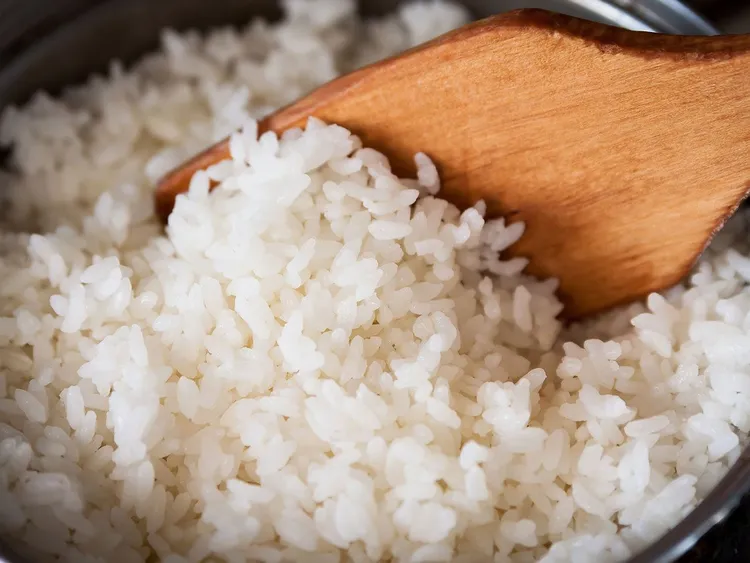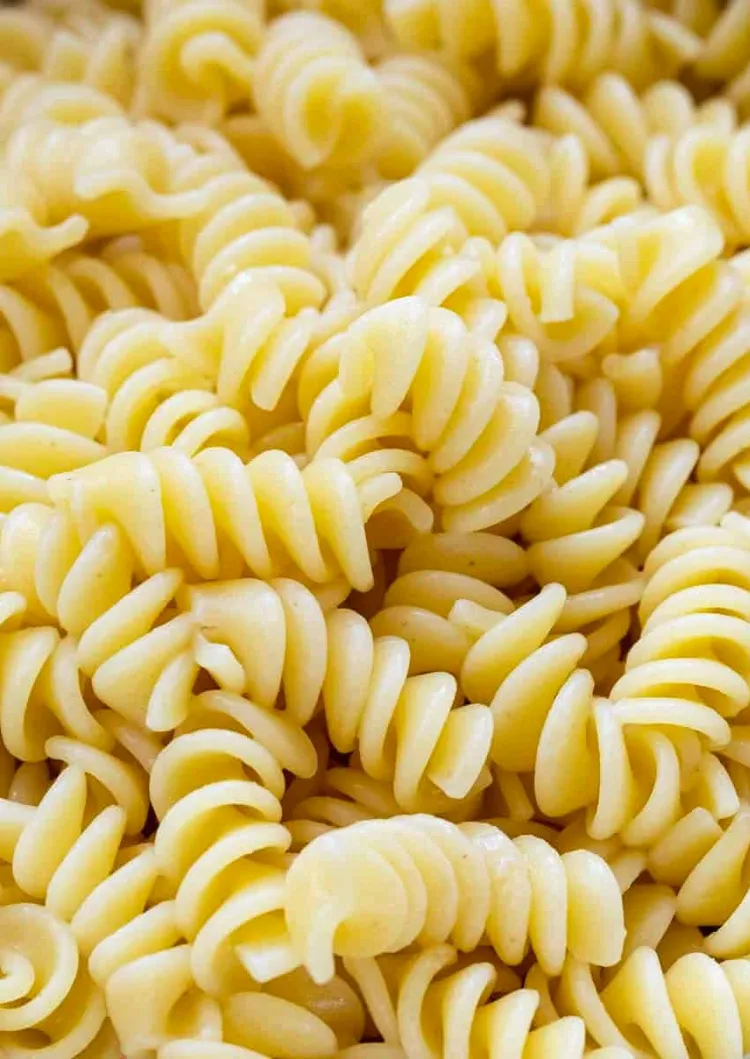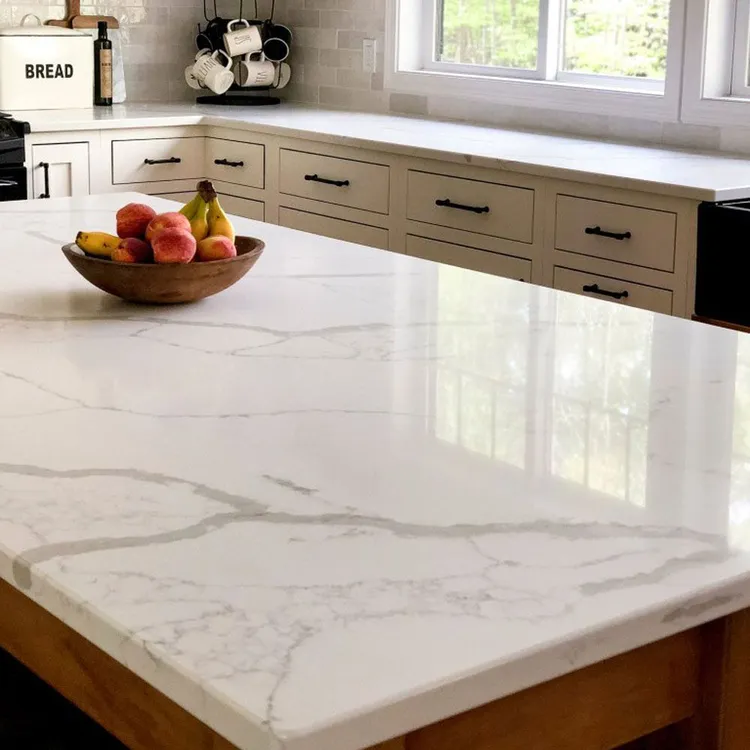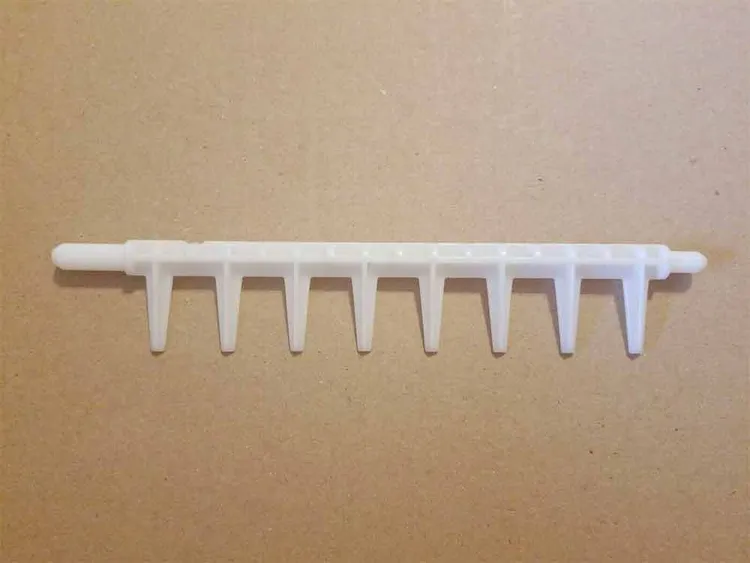Our recommendations are made independently through Research & Testing. We may receive commissions from purchases made via our links.
How to Clean With Baking Soda and Vinegar, According to a Harvard Chemist
We asked a Harvard chemist the science behind baking soda and vinegar for cleaning. Then, we made the experiments and rated their effectiveness.
When you mix baking soda and vinegar, it erupts with tiny bubbles, looking like it’s ready to destroy the worst of clogs and erase any hard-headed stains. But is it worth using it in place of the usual cleaning agents?
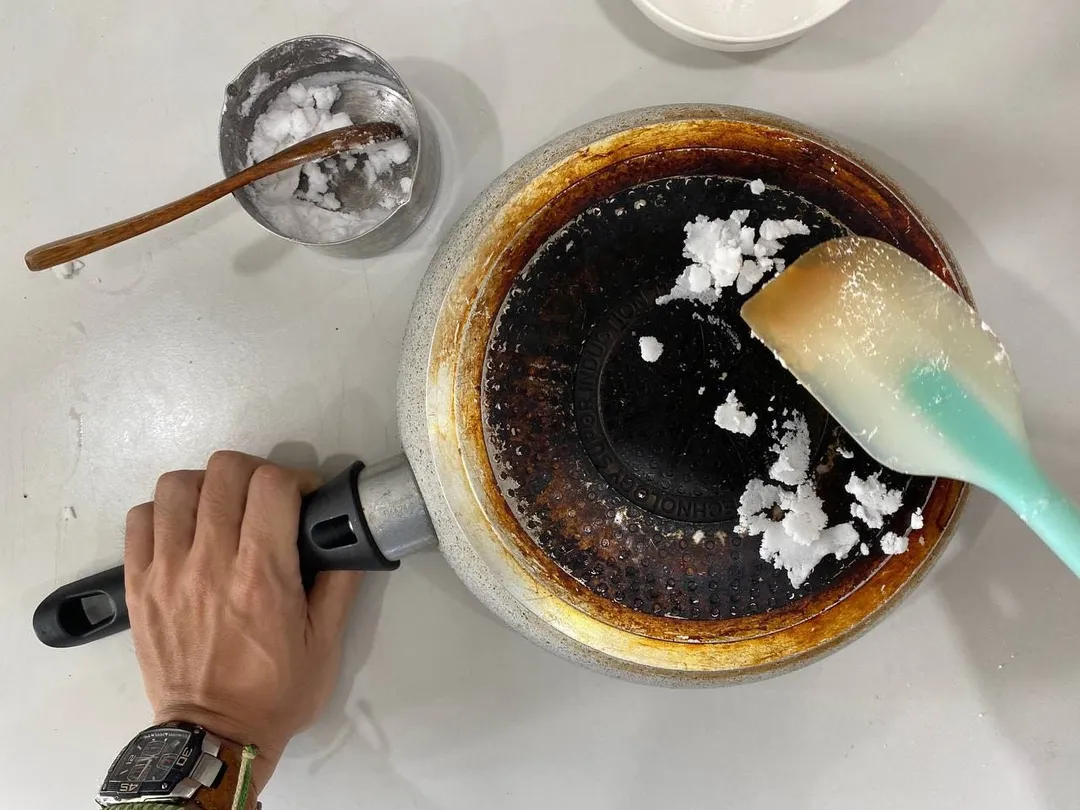
As a mixture, “I am not sure if it would be effective at all”, says Ania Levina, a Ph.D. of Chemistry from Havard and CEO & founder of Leleki.com.
But there are practical reasons, and ways, to clean with baking soda and vinegar for cleaning, which Ania was kind enough to share with us. So we bought a few boxes of baking soda and a bottle of vinegar to try it out.
How Do Baking Soda and Vinegar Clean? The Theory
Baking soda and vinegar are commodities for cooking and baking, but they are each also a commonly used standalone cleaning agent.

Baking soda contains sodium bicarbonate, a basic compound (pH 9.5). As such, it possesses the ability to react with, and weaken acidic stains, such as ones with sugar, fat, coffee, or alcohol, and is thus an effective degreaser.
Being a coarse powder, baking soda has a mild abrasive effect too, which may lend some muscle for scrubbing away the stain.
You may have also noticed it being touted as a fridge deodorizer. Ania explains that this is “likely because many of the odor molecules are slightly acidic”, so they react with the baking soda and become neutralized.
But potency isn’t its only, or even prominent, alleged advantage. If you’re concerned about harsh chemicals in cleaning agents, baking soda is a safe alternative. When in contact with acid, it creates water, carbon dioxide (the bubbles), and depending on the particular type of acid, a type of sodium salt. “It’s a non-toxic solution for cleaning,” notes Ania.
- Vinegar
Vinegar (pH 2) is a diluted liquid with acetic acid. It’s commonly used as a disinfectant, as its high acidity can kill a wide range of germs.
Vinegar can also be used to clean your glass windows, kitchen countertops, and any glass or ceramic surfaces. Disinfecting wooden cooking utensils and cutting boards is another popular use.
Vinegar is believed to react with, and thus remove hard water stains on your pots, toilet bowls, or bathroom tiles.
There are many different types of vinegar, but Ania recommends using white distilled vinegar as it doesn’t leave a stain. A 1:1 vinegar-water ratio in a spray bottle is her secret to a safe and effective kitchen disinfectant.
- Baking Soda Vinegar Mixture
When baking soda and vinegar come into contact with each other, hydrogen ions in the vinegar and sodium and bicarbonate ions in the baking soda react to form carbonic acid and sodium acetate. The carbonic acid then decomposes into water and carbon dioxide gas, which rises up in the form of foam and bubbles.
The bubbling effect may mechanically irritate stains and lift dust and dirt from off surfaces. “But you have to mix them on the spot”, adds Ania.

However, the mixture does little more than that. Baking soda being basic and vinegar acidic, they cancel each other out.
Baking soda and vinegar might actually be more effective when used separately. An advised method is to apply a baking soda-water paste to the surface, let it do the work, then spray vinegar to clean and remove baking soda residue, as we did during our experiments.
How Effective Are Baking Soda and Vinegar for Cleaning? Our Experiments
We wanted to find out if the famous baking soda and vinegar uses really work. So we made a paste of baking soda and water at a 2.5:1 ratio and applied it on different stained surfaces. (Many online resources suggest 3:1, but we found that it was too thick to apply to any surfaces).
So here’s the results of our experiments.
Cleaning the Oven: 6/10 – Not Worth It
To start with, we tried cleaning a baking tray that had already been cleaned using other methods, but was still heavily stained. We lathered baking soda and vinegar on one half of the tray and the baking soda paste on the other. Then, we left the tray at room temperature for 5 hours.
We noticed that some of the stains were removed, but not enough to leave the tray gleaming. The two cleaning solutions offered the same results — neither was more effective than the other.
We also tried cleaning the wall of an oven that hadn’t been cleaned for months, using the paste. We left it to do the work overnight, then removed the paste with a damp cloth before spraying vinegar over the area to clean the remaining baking soda.
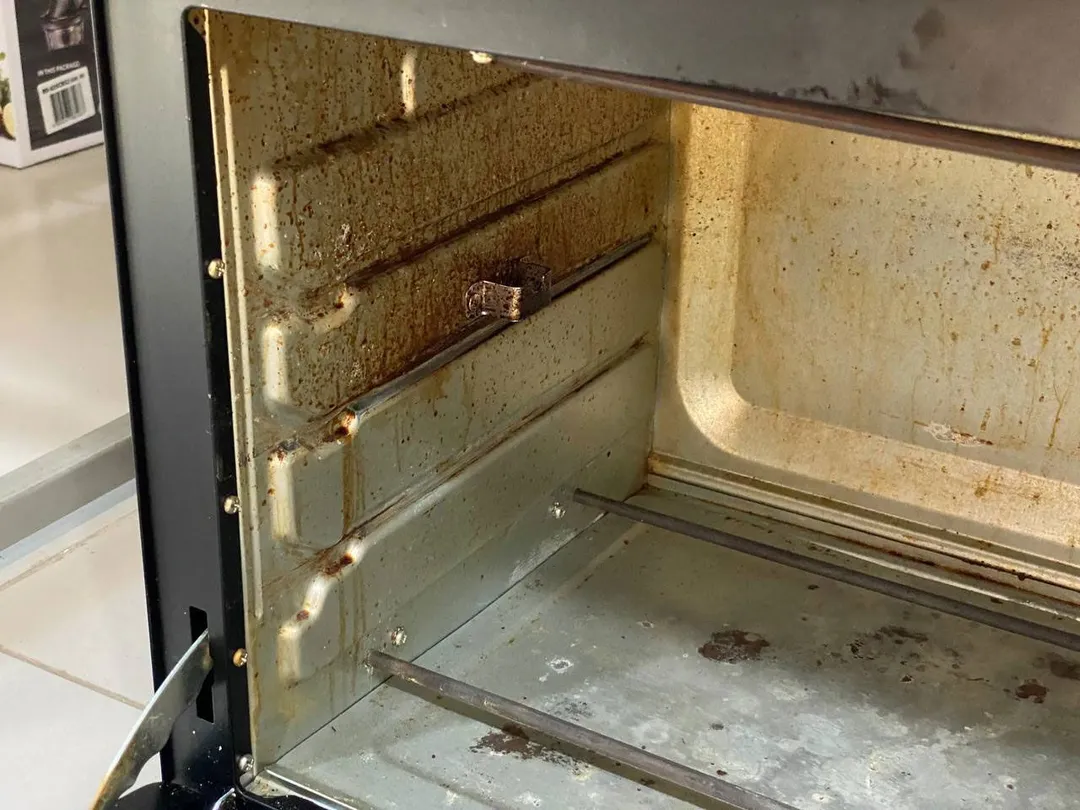
The oven before cleaning
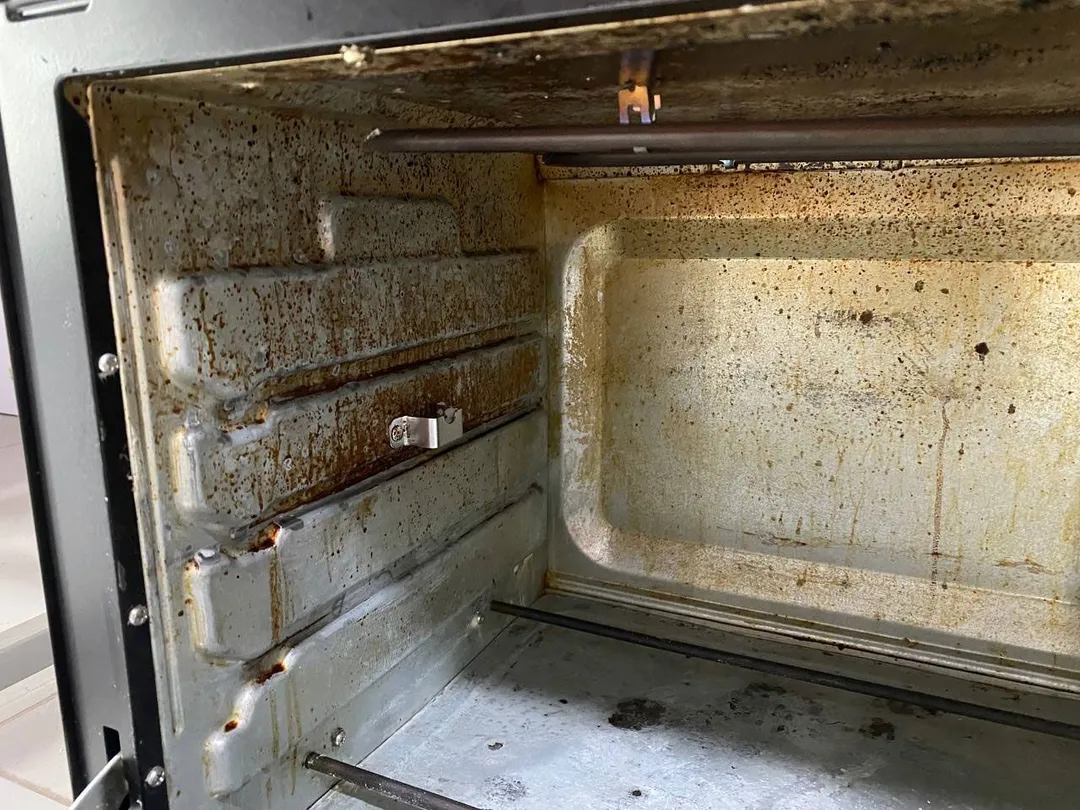
After cleaning.
(By Nguyen Ntk/HealthyKitchen101)
The wall was noticeably cleaner, but the effect wasn’t consistent. There were a few shiny clean spots, but some places looked untouched and worse yet, there were spots that resembled corrosion.
The conclusion: We felt it wasn’t worth it. Rinse the paste right away and it’ll be ineffective; but leave it there for longer and it could corrode the aluminum.
Unclogging a Drain: 9/10 – Very effective!
For this, we actually had to wait till there was a drain blockage in a coworker’s old apartment.
We poured 1/2 cup of baking soda followed by 1 cup vinegar, following ARS’s formula, left it for 10 minutes, then poured half a gallon of hot water into the drain. The blockage cleared immediately.
The clog, however, was minor — the drain still allowed water through, albeit very slowly. As such, we can’t say for sure if the formula still works if the congestion were worse.
Cleaning an Electric Stovetop: 7/10 – Worth trying
We applied the baking soda-water paste to a recently but heavily stained stovetop, left it for 5 hours before wiping it off and spraying vinegar to clean the baking soda residue. Although the stovetop did come up gleaming afterward, we had to use a knife to scrape off some burned sugar stains.
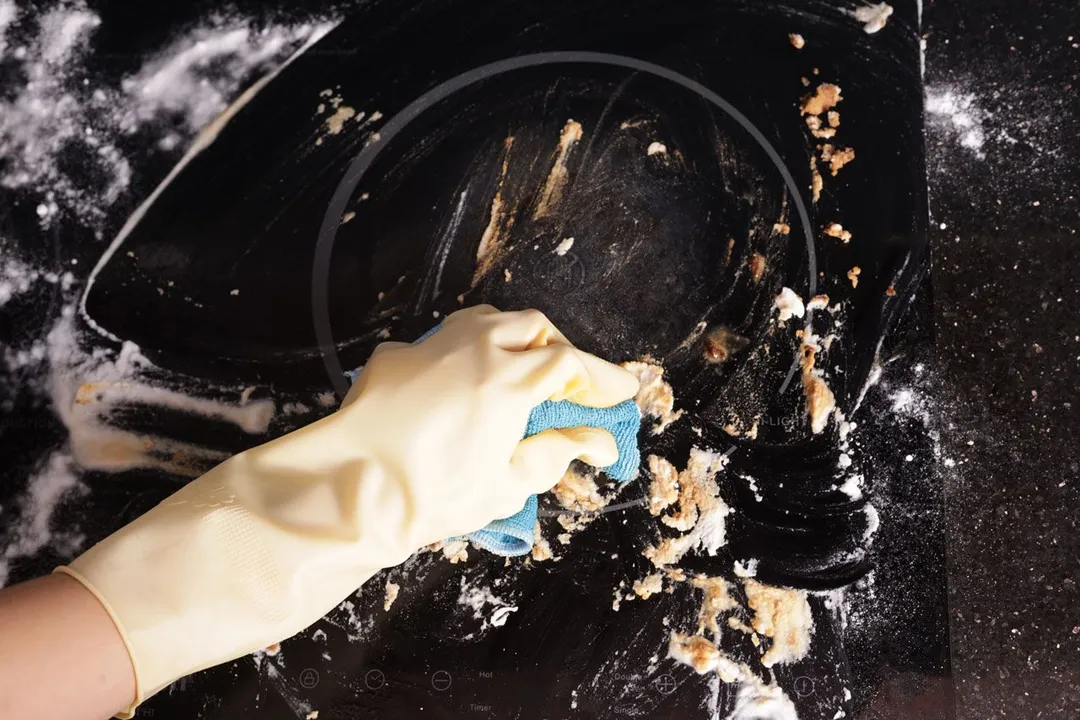
Renewing a Stainless Steel Sink: 10/10 – Excellent result!

The sink before cleaning

Post-cleaning
(By Nguyen Ntk/HealthyKitchen101)
Save a little splashing with plain water, we intentionally avoided cleaning a double-sink for a few weeks. Stains accumulated quickly enough.
After about three weeks, and while it was still wet, we applied baking soda to one of the sinks. We then added vinegar, waited a few minutes, then scrubbed the sink with a dishwashing sponge. The result was very satisfying: the sink came up spotless and sparkling within minutes.
It’s worth noting that we used simple dish soap on the other bowl and with some scrubbing, got the same results. So while baking soda and vinegar works great, for this job, it’s no more effective than dish soap or usual cleaning solutions.
Cleaning the Bottom of a Stainless Steel Pot: 7.5/10 – Much better than dish soap
This was a pot we used, and cleaned, frequently, but could never remove the hardened stains from the bottom with simple dish soap. We were surprised at how effective the baking soda paste was at removing a lot of the stains; it really made a big difference.
We lathered the paste on one half of the pan — can you tell which half? Note how the letter carvings became clear.
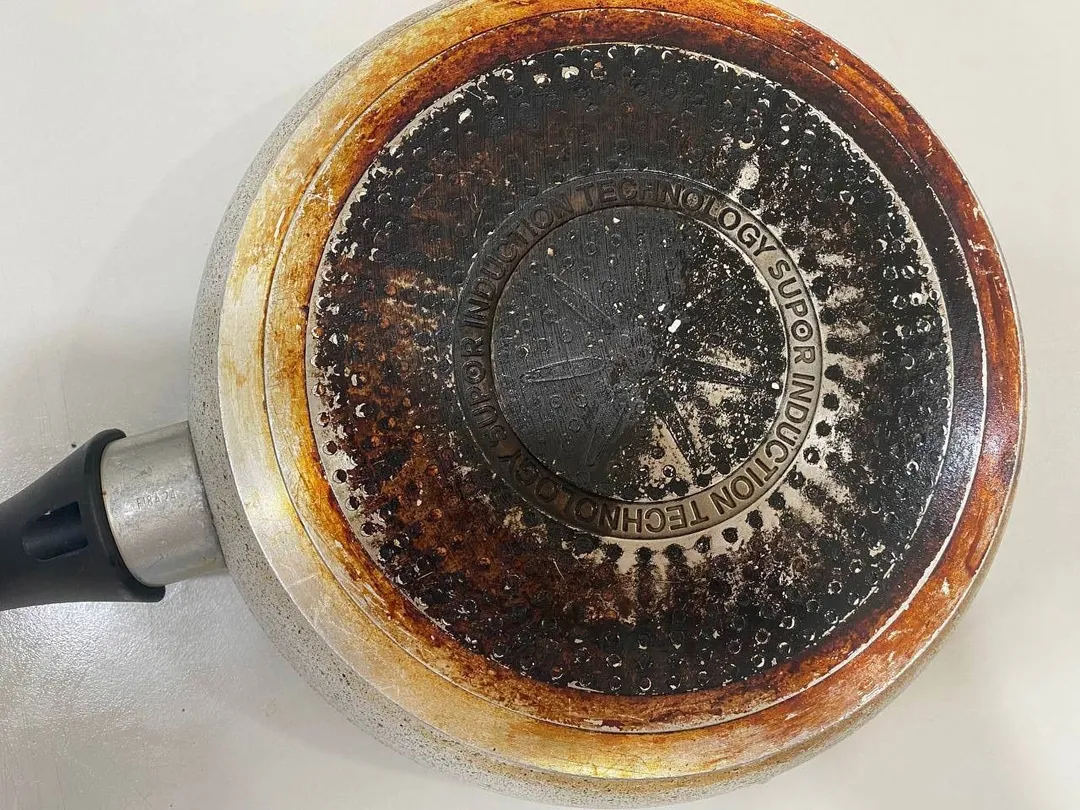
Removing Floor Grout Stain: Inconclusive
We tested three solutions: baking soda and vinegar, baking soda and water followed by vinegar, and plain tap water on floor grout that hasn’t been cleaned for more than a year. When we brushed it off with a toothbrush, the grout was equally white and clean in all three cases.
Maybe it works, maybe it was the toothbrush, but it wasn’t any better than tap water in our test.
Cleaning Hard Water Stain on Ceramic: 10/10 – It works!
We kept hard water in a ceramic bowl for months, changing it every day, for this test. The effect is the formation of a typical brown ring on the inside of the bowl — the kind you’d see on your cups, pots, bathtubs, and especially toilet bowls if you have hard water in your home.
The baking soda + water paste was applied to one half of the bowl. We left it for 5 hours and when we came back, the ring had dissolved into the paste, which had hardened but easily came off with a wipe.
For a toilet bowl, you may have to drain the water so that it stays well below the stain ring before you can apply the paste. You can also pour baking soda into the bowl without draining it first, but you would need quite a lot of baking soda for that.

We applied the baking soda paste to the bowl and left it there for a few hours.
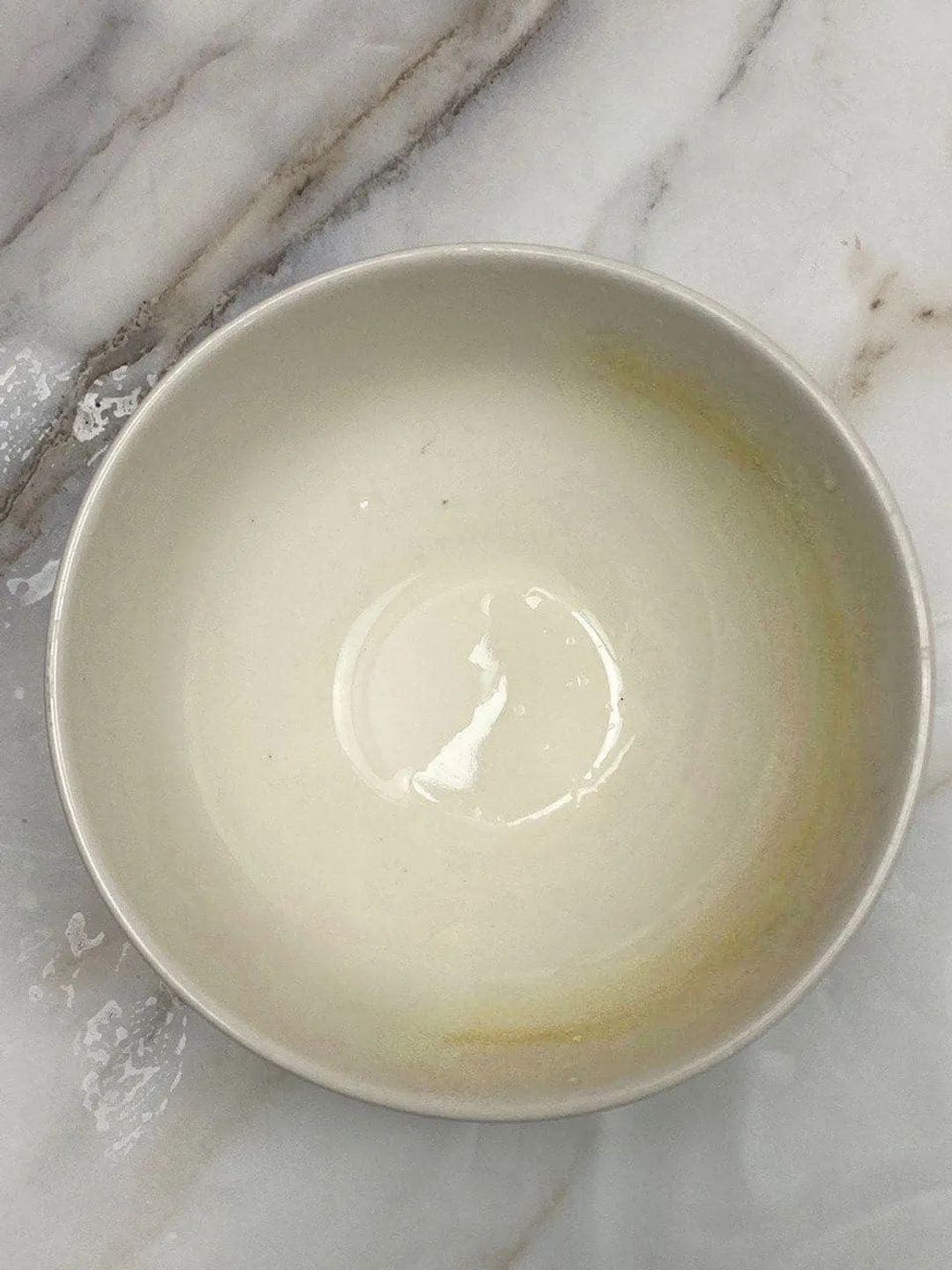
The paste worked!
(By Nguyen Ntk/HealthyKitchen101)
For the record, dish soap works on these stains too, but you have to use more than the usual amount and scrub it really hard with a sponge.
The Verdict: Should You Use Baking Soda and Vinegar for Cleaning?
We can say from experience that baking soda and vinegar are great cleaning agents.
Baking soda paste is especially effective against grease and hard water stains on ceramic and stainless steel surfaces, while vinegar does a nice job of removing baking soda residue and disinfecting surfaces. The baking soda and vinegar mixture, meanwhile, offers a quick, easy fix for clogged drains.
Both baking soda and vinegar are affordable, easily available, and much safer to use than bleach or other cleaning products.
That being said, there are precautions you should take when cleaning with these ingredients, most of which concern the combination of vinegar with other cleaning agents.
Tips and Safety Notes for Cleaning With Baking Soda and Vinegar
- Stains are generally the least resistant when they’re new. The sooner and more frequently you clean them the easier it will be. Clean your baking trays, oven, pots, and ceramic containers immediately after use so you won’t have to worry about stubborn accumulations later on.
- Always use rubber gloves when cleaning with baking soda, as direct contact may cause dryness or irritation to your skin.
One of us suffered mild peeling on her hands several days after our experiments because she cleaned the baking soda paste off a small bowl with her bare hands.
- Never mix vinegar with chlorine bleach — the two can react to create “a highly toxic and potentially lethal chlorine gas”, Ania notes.
- Vinegar when mixed with hydrogen peroxide can generate peracetic acid, which is a strong irritant and can damage your skin, eyes, and airways.
- Vinegar is not to be applied on certain materials. Its high acidity may cause reaction and a dull look on your natural stone countertops or hardwood floors.
- One downside to cleaning with vinegar is its pungent smell, which can be too much for some. Opening your windows, however, may help dissipate it.

Alternatives
Baking soda and vinegar are effective and relatively safe to use, but they’re not pinnacles. If you don’t have them to hand or when they simply don’t meet your cleaning needs, there are a lot of other options.
Your easiest bet is to go with cleaning agents that are designed for a specific task: detergent for your clothes, dish soap for your dishes, toilet bowl cleaner for toilets, etc. Follow the manufacturer’s instructions thoroughly and you will yield good results.
Multi-purpose products such as bleach or hydroperoxide can be very effective, but they’re strong and potentially lethal with the wrong formula. You need to do your homework and take precautions seriously.
For new, normal stains, a simple mixture of soap and water works most of the time.
That’s everything we know about baking soda and vinegar as cleaning agents. We hope the information has been useful to you. Don’t hesitate to send us your questions or to share your experience with us!
Authors
Luna Regina is an accomplished writer and author who dedicates her career to empowering home cooks and making cooking effortless for everyone. She is the founder of HealthyKitchen101.com and HealthyRecipes101.com, where she works with her team to develop easy, nutritious recipes and help aspiring cooks choose the right kitchen appliances.

